Rachel Burton-Krinks acknowledges she was once a “big-city girl”. When she traded Sydney for Brisbane, she had no idea the Queensland capital had islands. But when a friend brought Coochiemudlo to her attention, the timing couldn’t have been more felicitous. Before Rachel signed the papers on a $500,000 city property where “you could hear your neighbour sneeze” she took the 10-minute ferry across Moreton Bay, south-east of the Brisbane CBD. There she was met with calm beaches on three sides, mangrove forests, melaleuca and mangrove wetlands and friendly locals. She bought the island’s third-cheapest house.
The island’s unique name, Coochiemudlo – or, as the locals say, “Coochie” – originates from the Traditional Owners, the Quandamooka people, who named it kutchi (red) and mudlo (stone) in the Jagera language, after its small but distinctive red cliffs. The 410ha island is located north of MacLeay Island and west of North Stradbroke Island. During her 14-plus years on Coochie, Rachel has enjoyed a lifestyle she couldn’t find in the suburbs: a supportive, artistic community, affordable housing and daily ocean swims. “It’s the only place I’ve lived where I have a personal relationship with the landscape, as if it’s a person,” she says. “You understand its seasons, its tides, and the smell of it. I sound like a romantic, but it’s a place that’s got under my skin in a way that no other place has.”
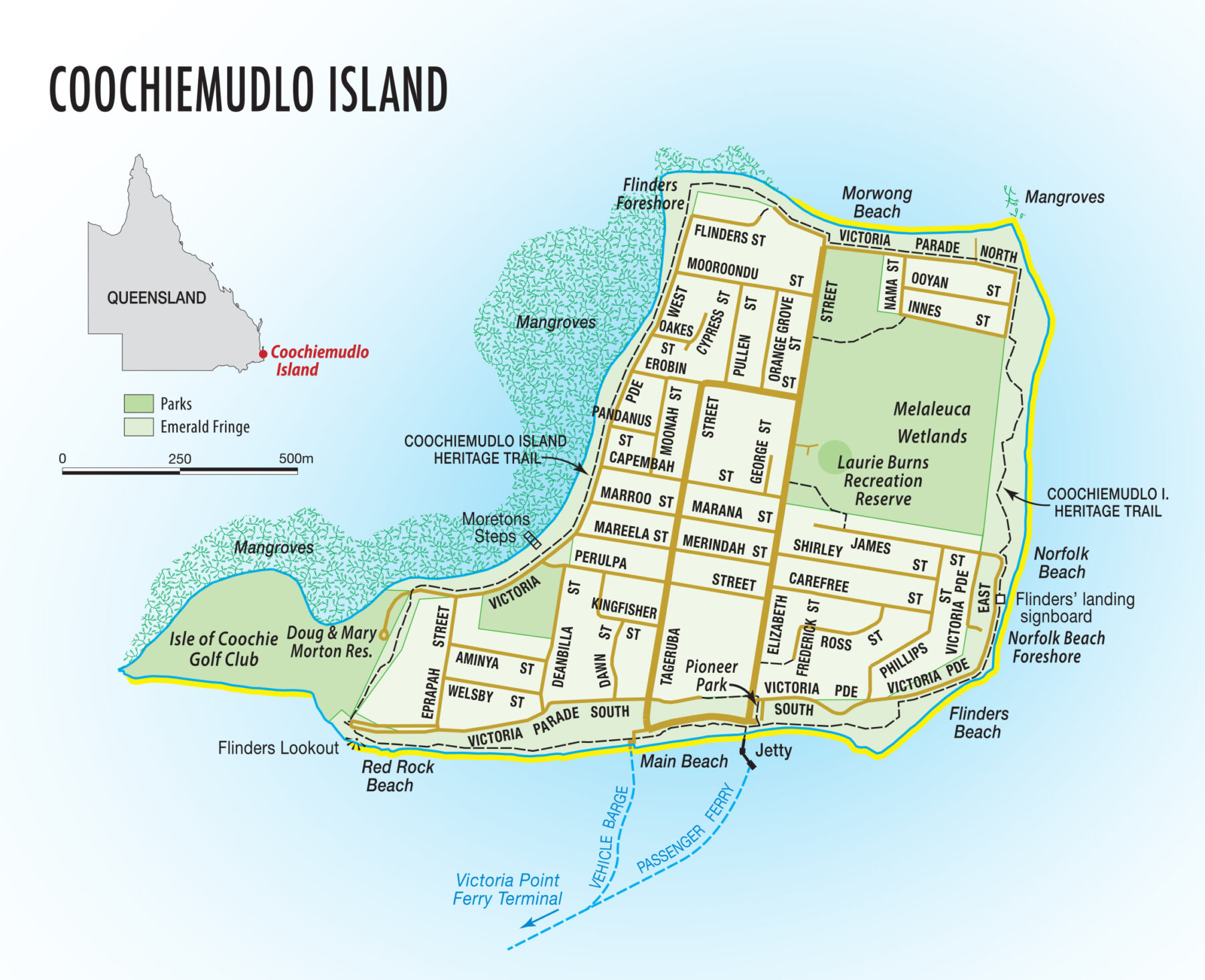
Following the island’s rhythm
Coochie has an “emerald fringe” – a reserve that is locally heritage-listed and development-free – meaning the sea is equally accessible to everyone. It’s Queensland’s only inhabitated island with an intact esplanade. Many locals, including Rachel, are in tune with the tidal changes. Some head to the beach every day to do yoga, swim laps, or enjoy a glass of wine at sunset. “It’s how I structure my life – around the tides,” Rachel says. Enter the water at low tide and your legs get muddy. But when the water rises and the calm sea draws closer, you have what she describes as a “multi-millionaire’s plunge pool”. At high tide, the sea folds over the path, so all you have to do is walk to the end of the street and hop in.
This attention to the island’s natural rhythm allows Rachel to avoid being overly locked into her daily work routine. The presence of the sea frees her from her busy mind. “When I was running a business, and more recently as an employee working from home, I can get tense working all day, with my shoulders up to here,” she says. “I love that I can walk down the road and experience nature, lie under the trees, feel the sea lapping at my feet, and see the sun dappled through the leaves.” Being the former publisher of the independent island newspaper, Coochie Island News, she knows the stories of this captivating place – and most people know hers.
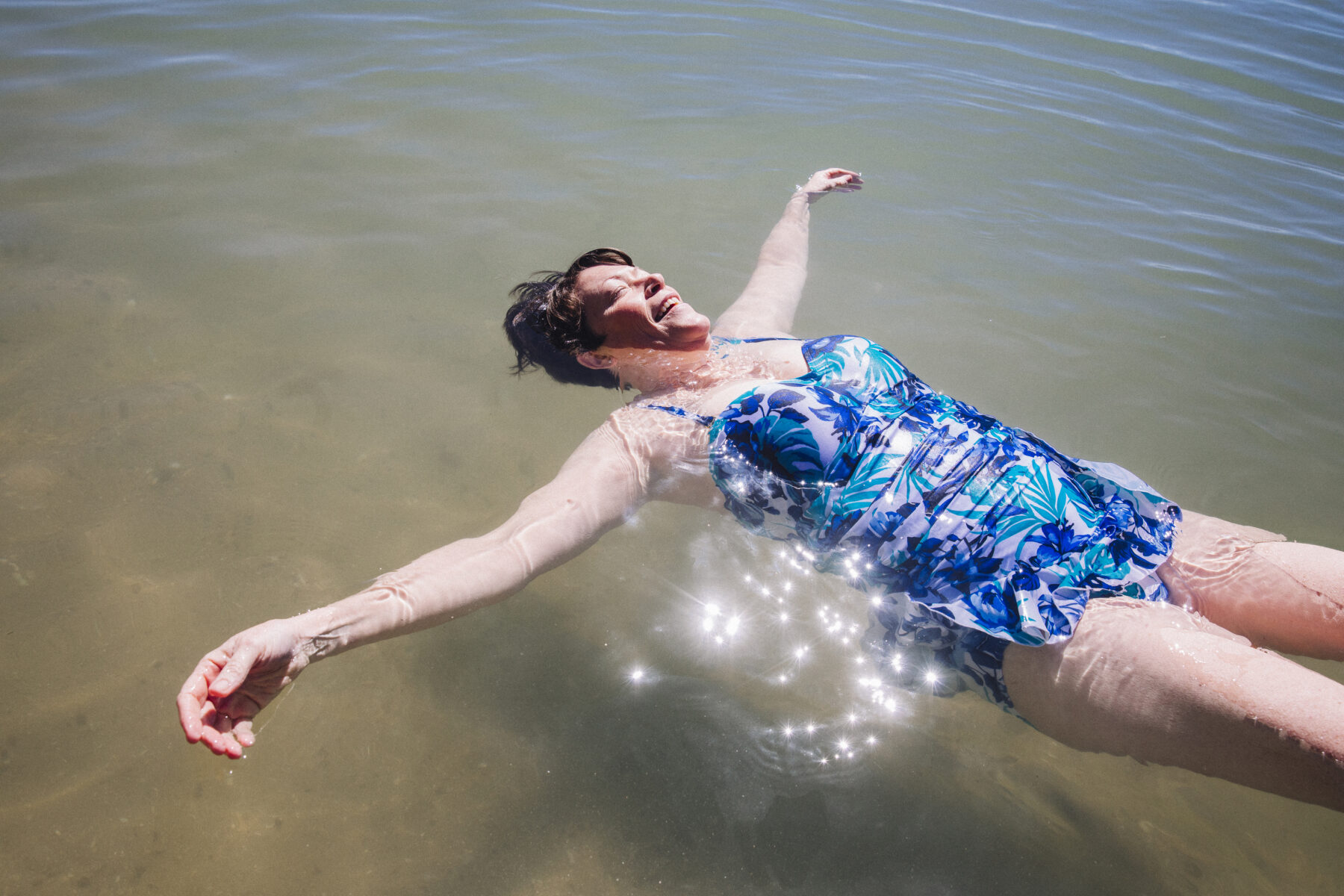
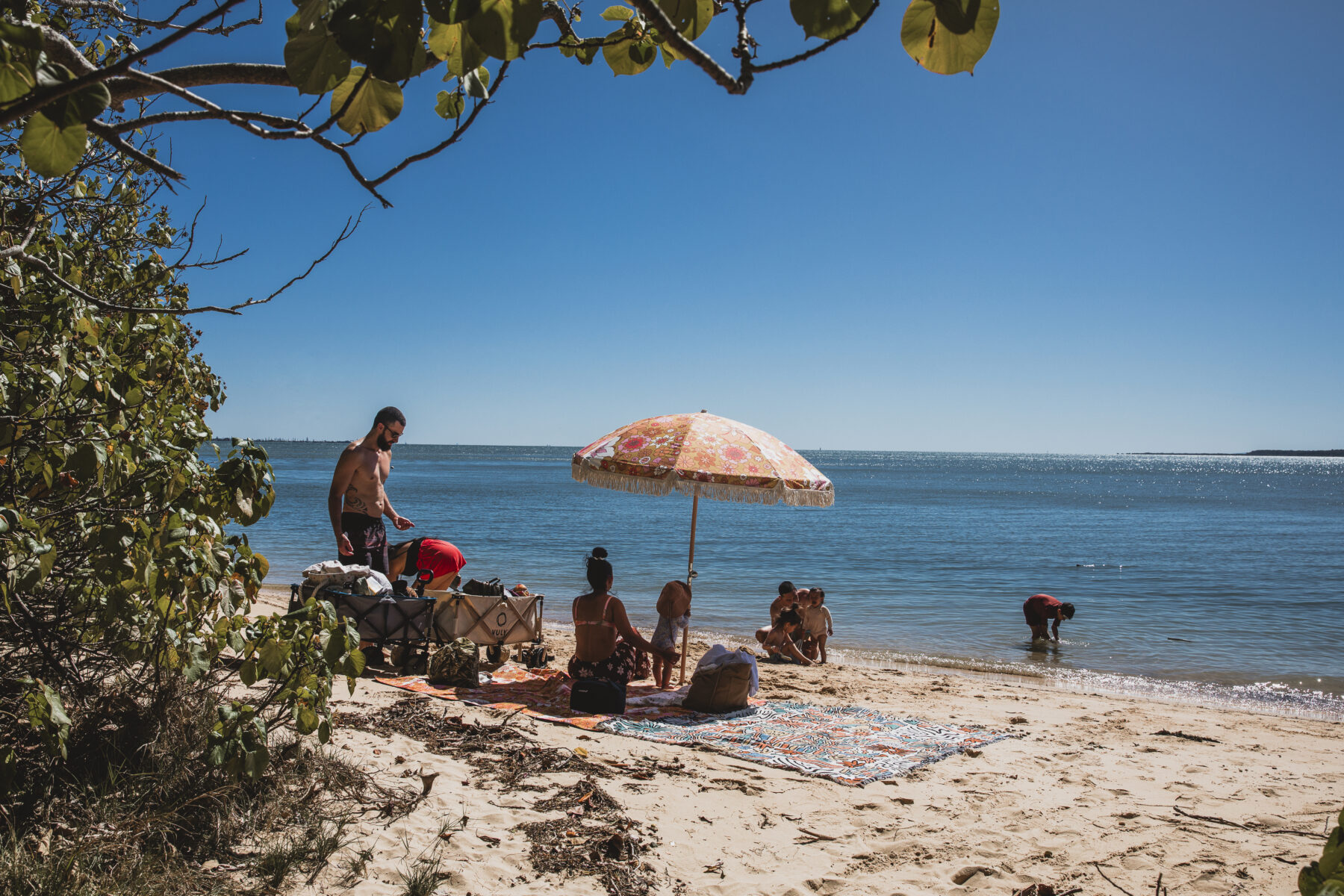
The island has seen Rachel through many seasons of her life, including the dissolution of her marriage. As a newly single woman, she formed close, supportive friendships on the island, but when she was ready to wade into the waters of modern dating, she wasn’t spared the judgement. “Just as it is in other parts of Australia and the world, there is scrutiny of single women of a certain age. There’s gossip,” she says. “One night I had a friend over to my house and we had a couple of wines, so they left their car at mine and walked home. The next day, I was on the ferry heading to work, and a local gossip said, ‘Had a sleepover, did we?!’ because she’d driven past and seen the car.”
Don’t get Rachel started on the necessary evil that is dating apps. “If you get on Tinder, you see everyone else who is single on the island,” she says. Coochie is home to about 700 people, so opportunities to meet someone on the island are low, while the chances of awkward run-ins are high. “If you find someone off the island, and you’re all dressed up at 5.30pm heading to the ferry, all your island friends coming home from work spot you. They whistle and they scream, ‘Rachel’s got a date!’” she says with a laugh. “It’s hardly worth it.” This lack of privacy has taken getting used to, but Rachel knows that living in close proximity to others bestows a sense of connectedness that is priceless.
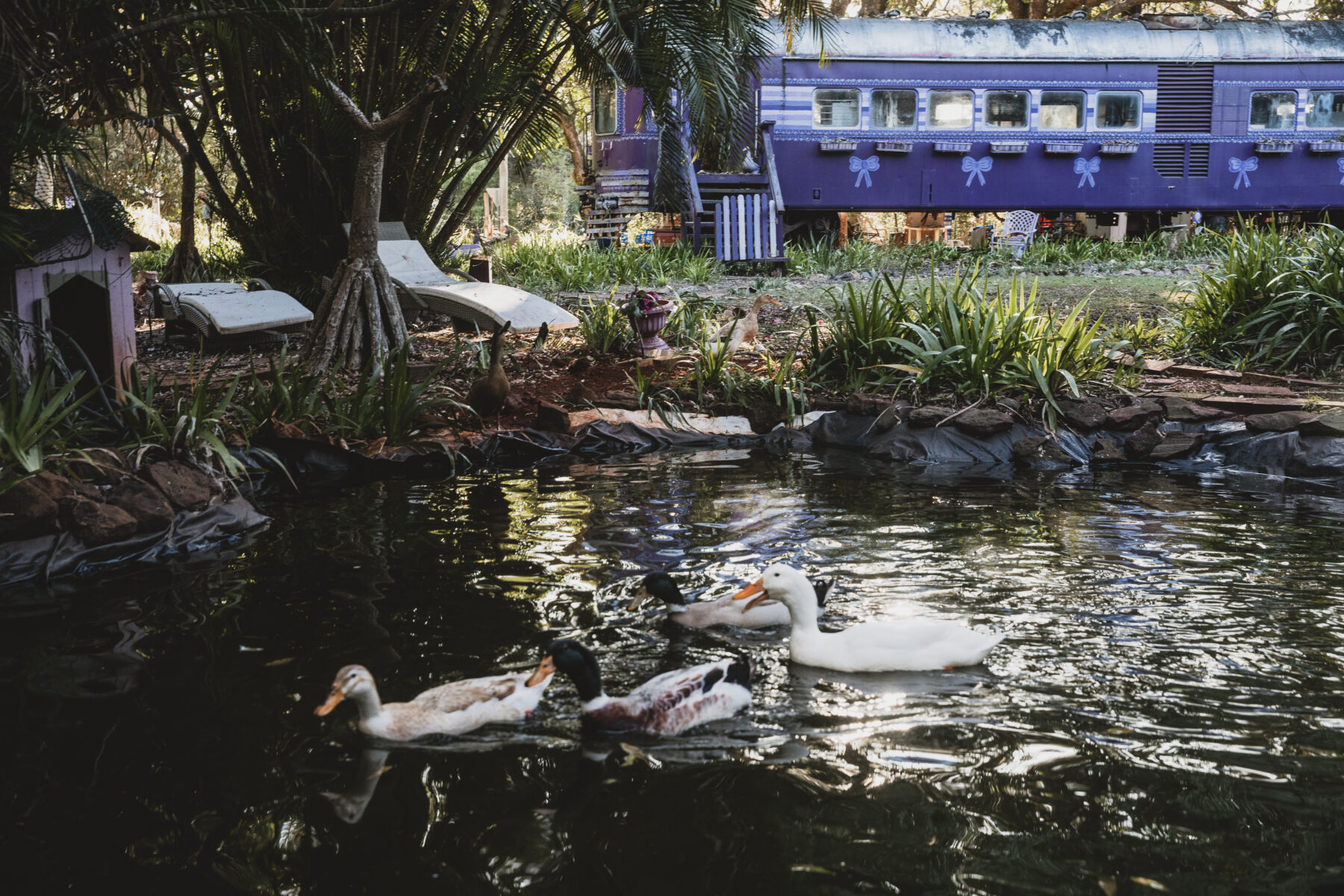
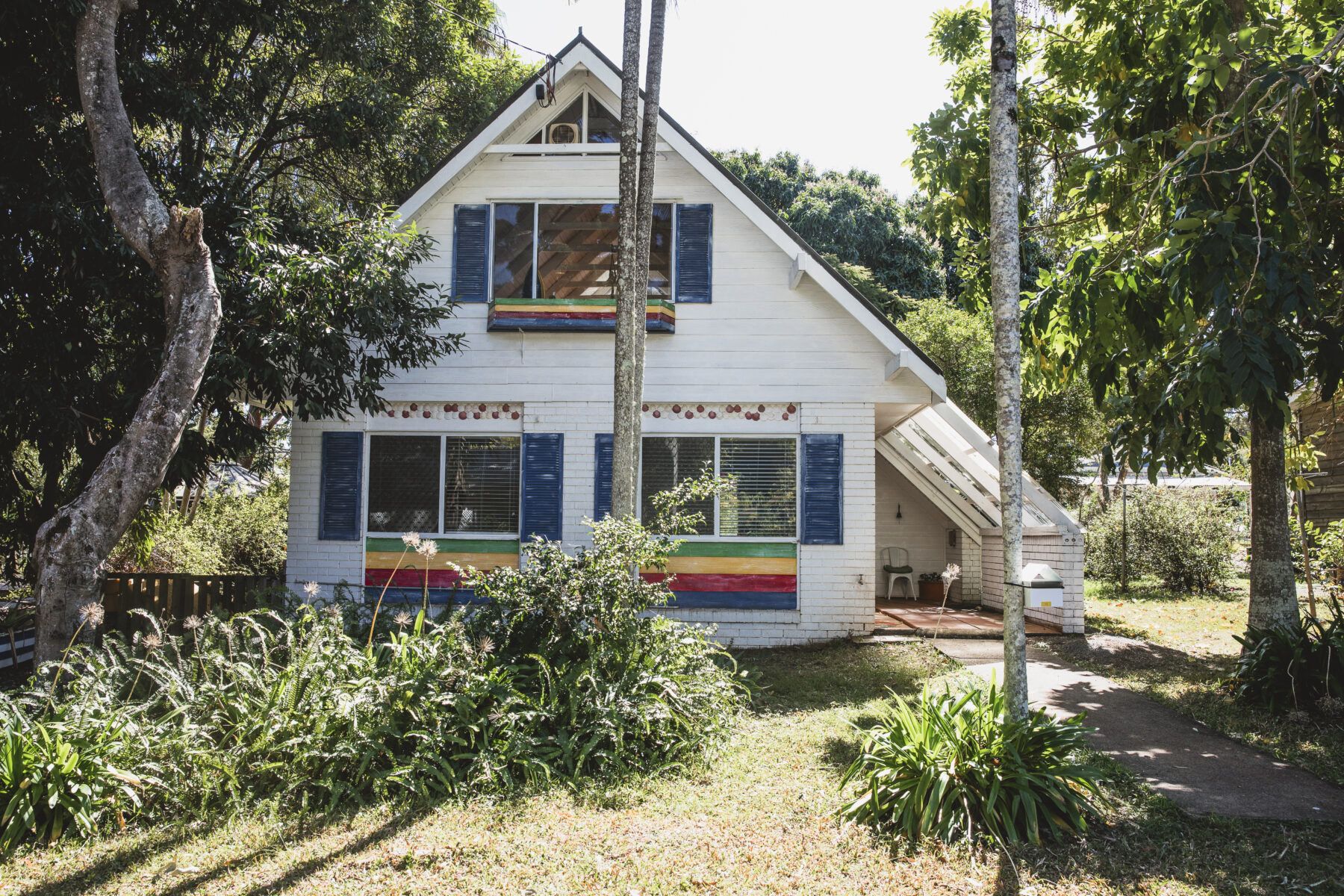
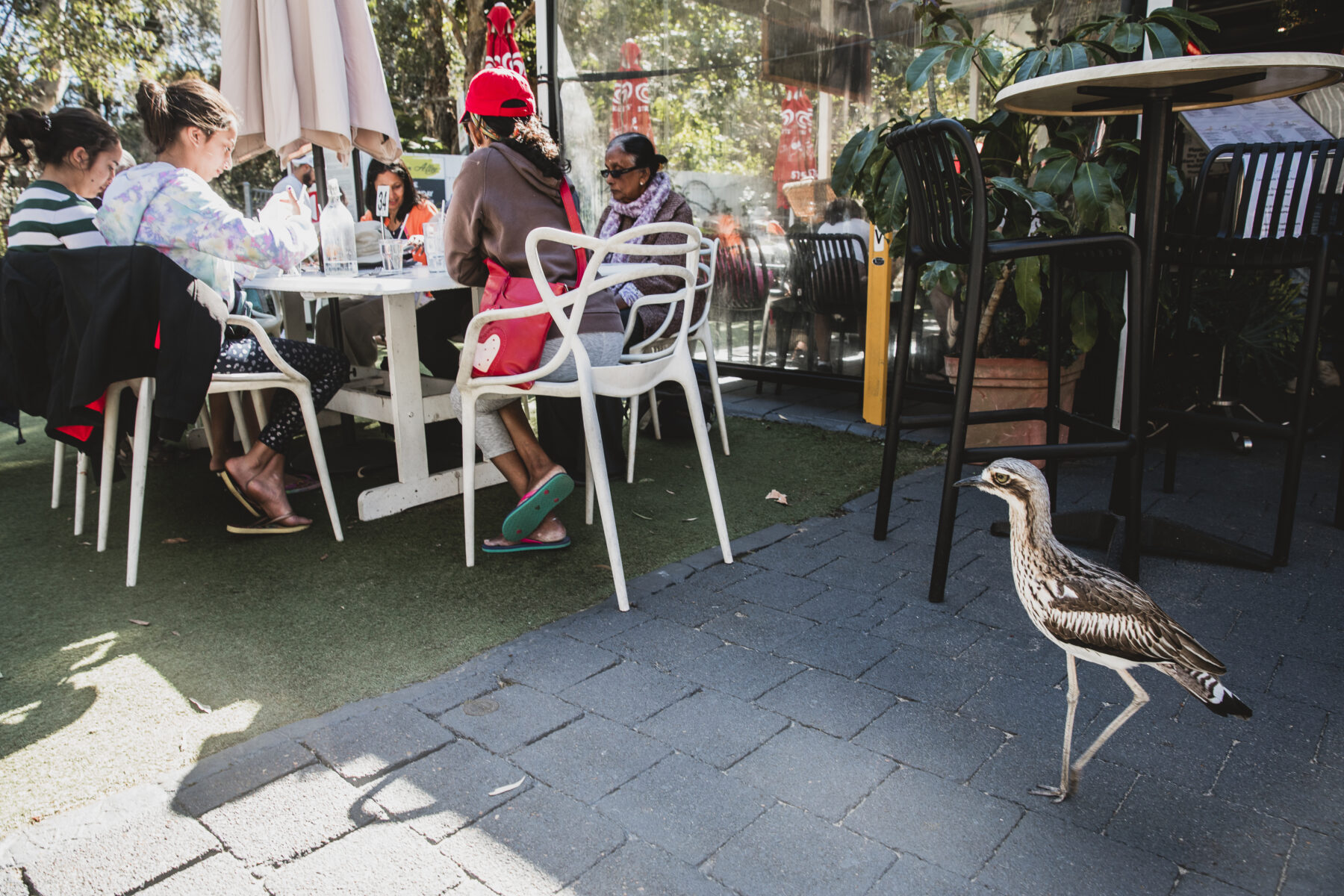
Island connections
Coochiemudlo Island is home to a number of social clubs. There are groups for poetry, meditation, writing, lifesaving, indoor bowls, food appreciation, card playing, Christian fellowship, outrigger canoeing and turtle rescue. Facilities include BMX tracks, tennis courts, an art gallery, a library and a golf course. There’s also a thriving Men’s Shed and an active creative community. For musicians, there are music nights, hosted in alternating houses, and a larger “jam-a-long” each month, where everyone is welcome. There was a succesfull music festival held in 2021 that was, of course, referred to as “Coochella”. For the artists – most of whom have studios attached to their homes – there’s a collective that runs a gallery above the local cafe.
Because many of these groups and events are easily accessible, the island attracts a lot of seniors. “It’s like a moated retirement village,” Rachel says. “There’s so much going on that is accessible and age-friendly. My friend, who’s 80, just joined a new ukulele group and they had their first performance a few weeks ago in this grassed amphitheatre, with beautiful gums behind it and kookaburras. Everybody was having a go.” When Rachel lived in Sydney and Brisbane, most of her friends were of a similar age. She stuck to “her kind”. But over the past decade on Coochiemudlo, Rachel since embraced a more expansive kind of socialisation, farewelling the previous limitations.
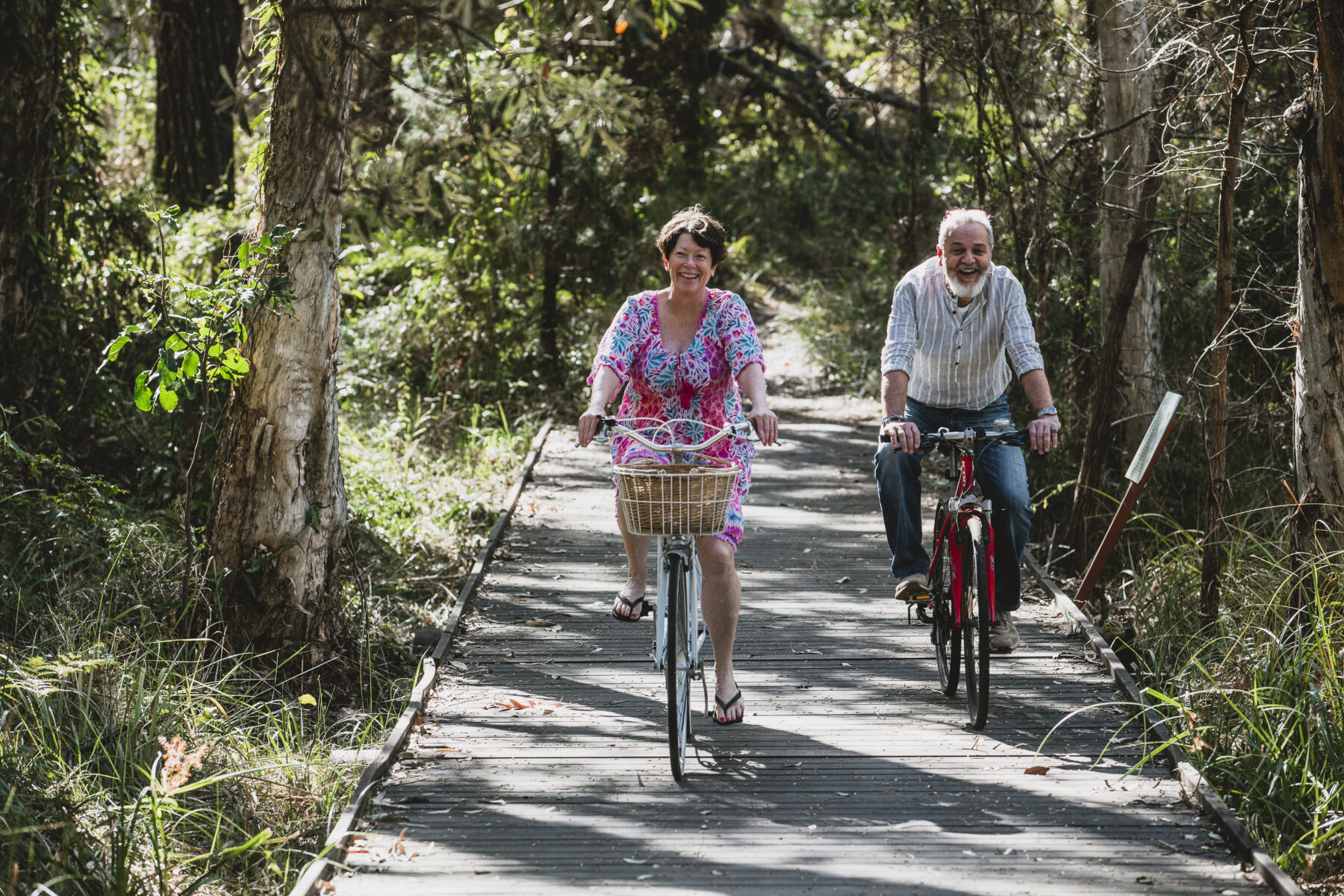
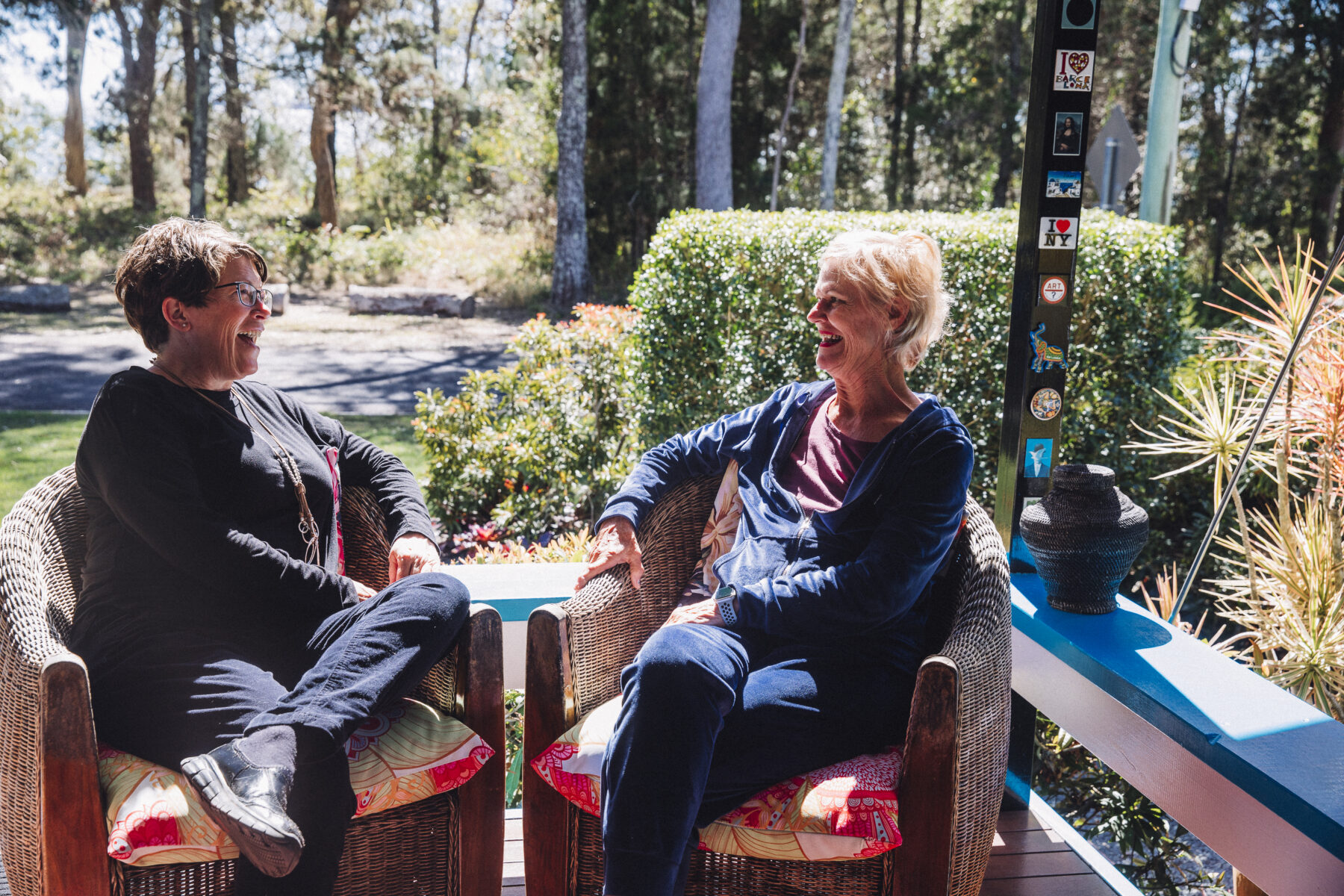
Her divorce was a pivotal part of that change. She instinctively turned to other women in their 40s but found they were busy with their partners and their children. What could have been an isolating experience became one of enlightenment; she made plenty of friends – only they were two, maybe three, decades older. “On the island, you bond with people because of who they are and what you have in common,” Rachel says. “Not because of your age. Some of my best mates are 70. We go swimming together, we have dinner parties. It’s a joy. Because my family lives interstate, it’s like I have a new bunch of aunts, uncles, mums and dads. We look after each other.” This element of care means older, child-free people can thrive within the island’s extended family.
Like nearly one-quarter of Australian women, Rachel doesn’t have children. As she approaches her 60s, she wonders how she’ll cope with the inevitable health issues that come with age. From her experiences on the island, she feels reassured. “I will have a better old age here on the island than if I was anonymous in a suburb,” she says. A few years ago, Rachel looked after one of her older friends on the island who underwent cataract surgery, cooking for him and staying overnight to care for him. When she recently had an operation, he did the same for her. In a time where some people dread the social interaction that comes with accidentally wheeling out the bin when the person next door does, these expressions of neighbourly care might seem like a thing of the past. A study by the Italian Università degli Studi di Cagliari on the Sardinian Blue Zone – a region with a high prevalence of centenarians – found that living in a socially connected community, where people looked out for older members, improved the ageing population’s physical and mental health. Like these Mediterranean islands, Coochiemudlo’s older residents are able to lead healthy and fulfilling lives in a community where kindness and care are core values.
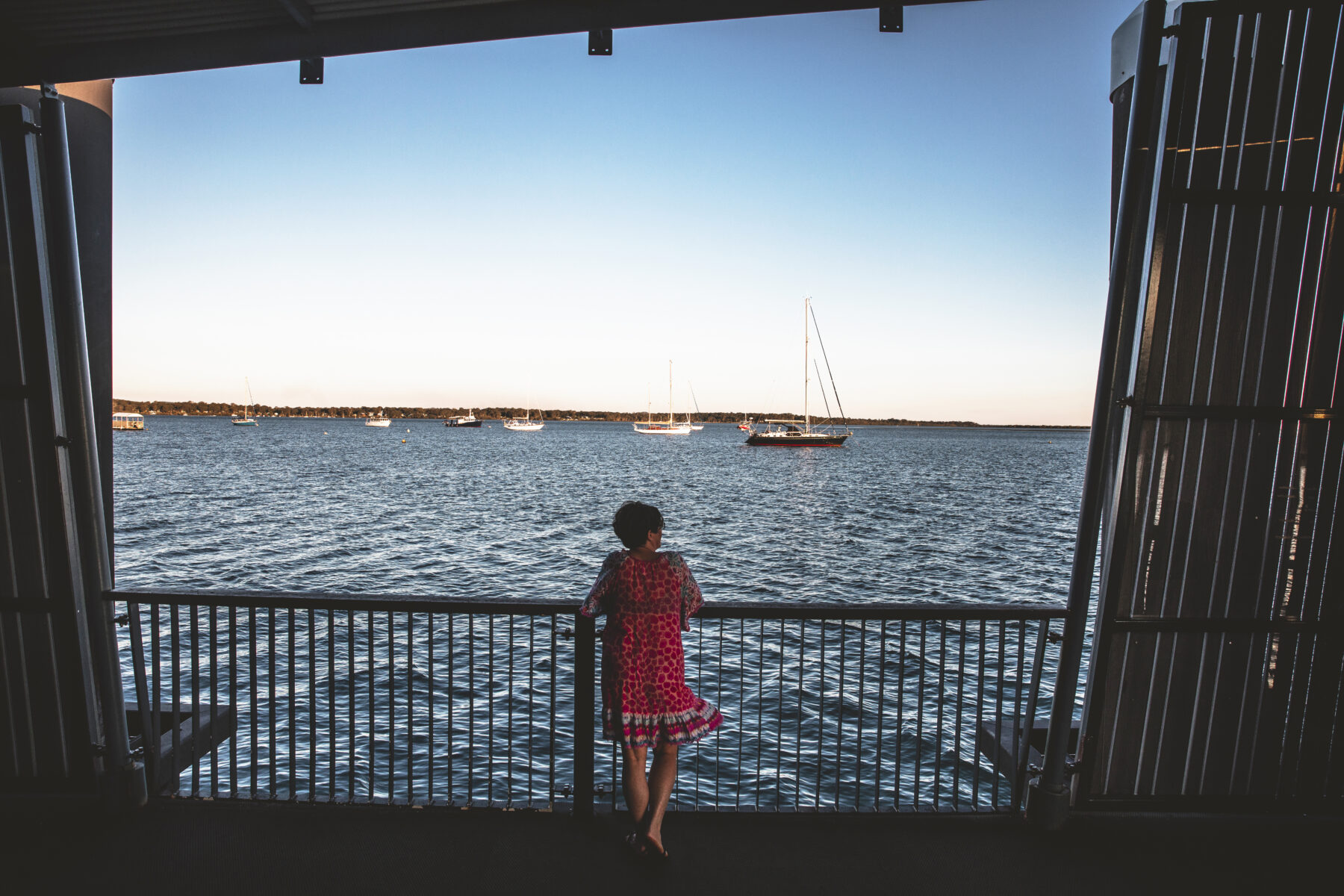
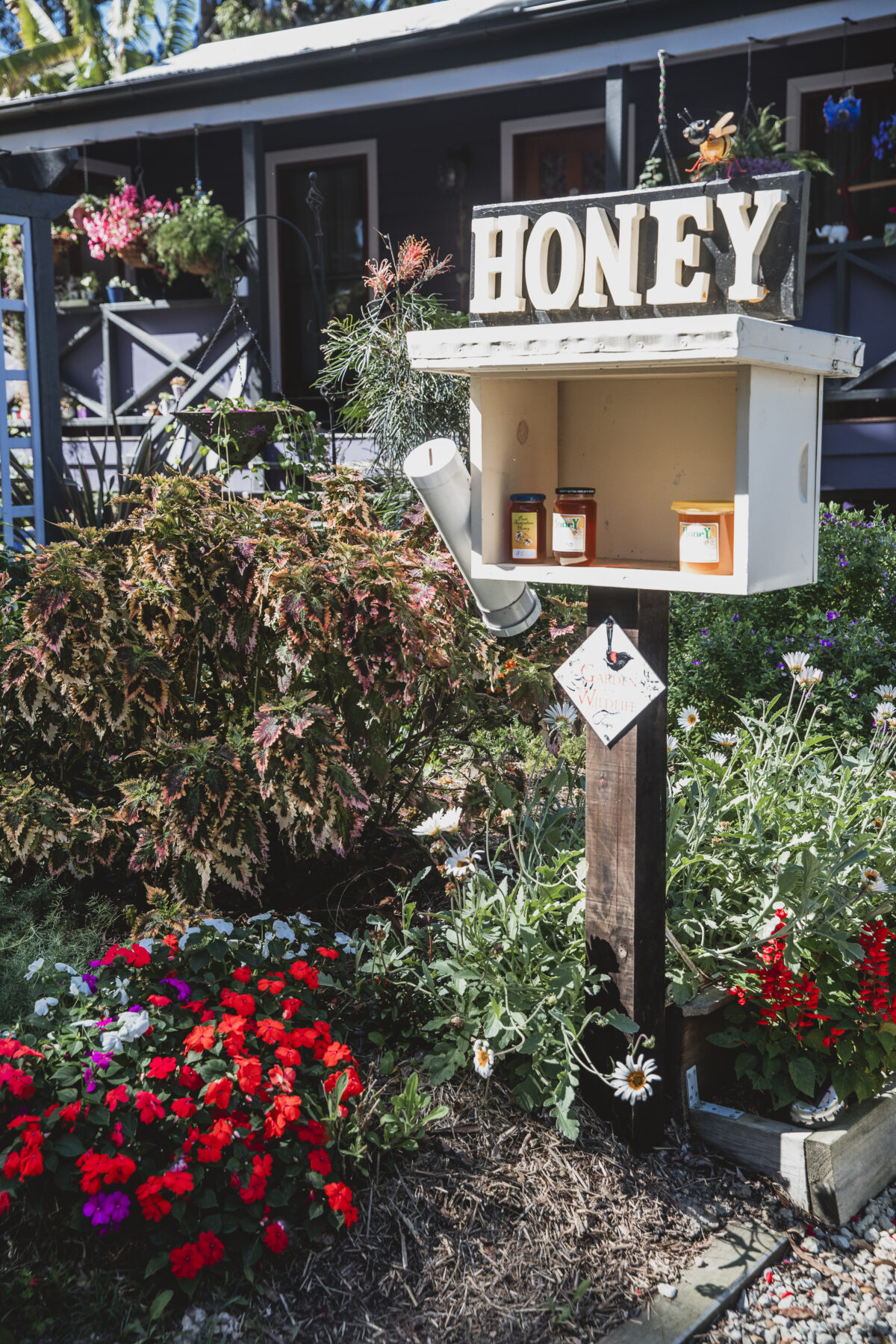

A caring spirit
This caring spirit extends beyond looking after neighbours. Coochiemudlo Island Coastcare, a local volunteer group, works to protect the island’s coastal ecosystem by reprofiling dunes in response to shoreline erosion, replanting coastal grass, collecting litter and monitoring wildlife. Several pythons call the island home (“What I don’t see I don’t need to worry about,” Rachel says) as well as a community of birds, including brahminy kites, rosellas, bush stone-curlews and sea eagles.
A few years ago, Coochiemudlo locals banded together to defend a pair of local eagles. “The eagles liked to nest on the tallest tree on the island, so when a new radio tower was set up on the island, they built a nest up there. When Telstra wanted to switch the island from 4G to 5G, the community was in uproar, saying the eagles were there. So Telstra built a contraption for the nest. It’s not ideal that the eagles are up there at all – just imagine the radiation – but the fact that the community and Telstra worked together to save the nest is pretty special,” Rachel says.
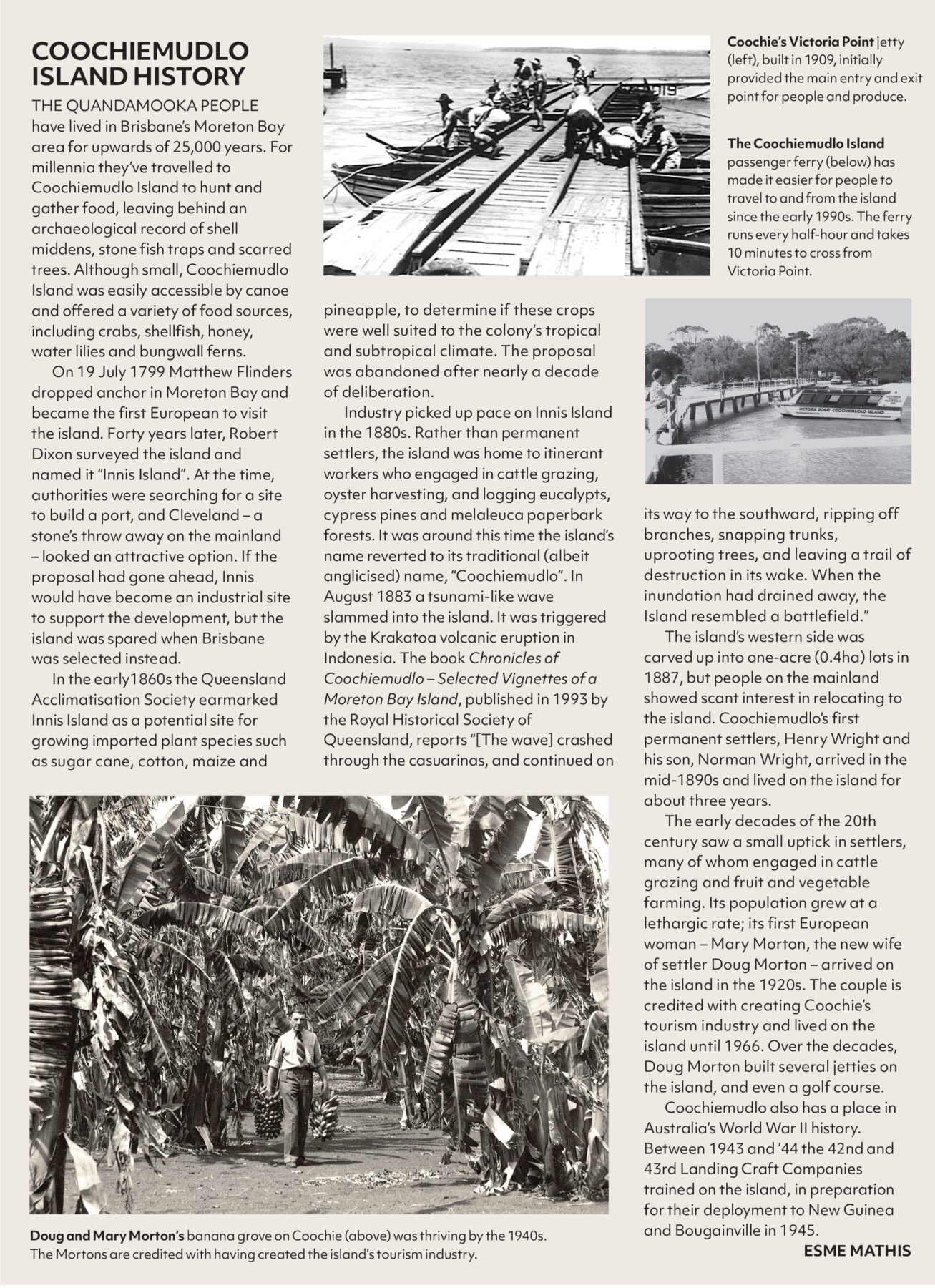
The island also used to be home to a thriving peacock population, but these birds didn’t receive the same kind of community support. They were classed as pests and moved off the island – except for one. Kevin – the “bachelor peacock” – is rumoured to have hidden when the others were removed. “I wish I could bring him a peahen. I feel so sad seeing him just sauntering about on his own,” Rachel says.
The island has no medical facilities, but there are several people trained by the Queensland Ambulance Service who triage patients before further assistance arrives. In emergencies, a rescue helicopter can collect patients on the island and transport them to hospital, which takes only 10 minutes. “I had vertigo once and got taken by the ambulance on the ferry, at peak hour, surrounded by the island community. They were taking my medical history on the ferry in the middle of everyone. It was awkward,” Rachel says. “There are things like that that happen here and you just need to suck it up.”
Unlike some of Australia’s other small island communities, Coochiemudlo has roads. Some people drive on the island, especially those who live far from the jetty, and parents with young children. But Rachel prefers to walk. There’s a vehicular barge that can transport people and their cars to the mainland, as well as a regular ferry service for people and their dogs. But many of the islanders zip around in their tinnies. It’s a short ride to the mainland (which the locals refer to as “overseas”) and an hour to the middle of Brisbane. “You can commute to work and then at the end of the day you can come home and live on an island,” Rachel says. Despite its proximity to the big city, the island can feel like worlds – even decades – away from urban life. “It still has the seaside hamlet holiday vibe – people riding around on bikes, boats piled onto utes, lots of people just cruising around being Australians,” says Rachel.
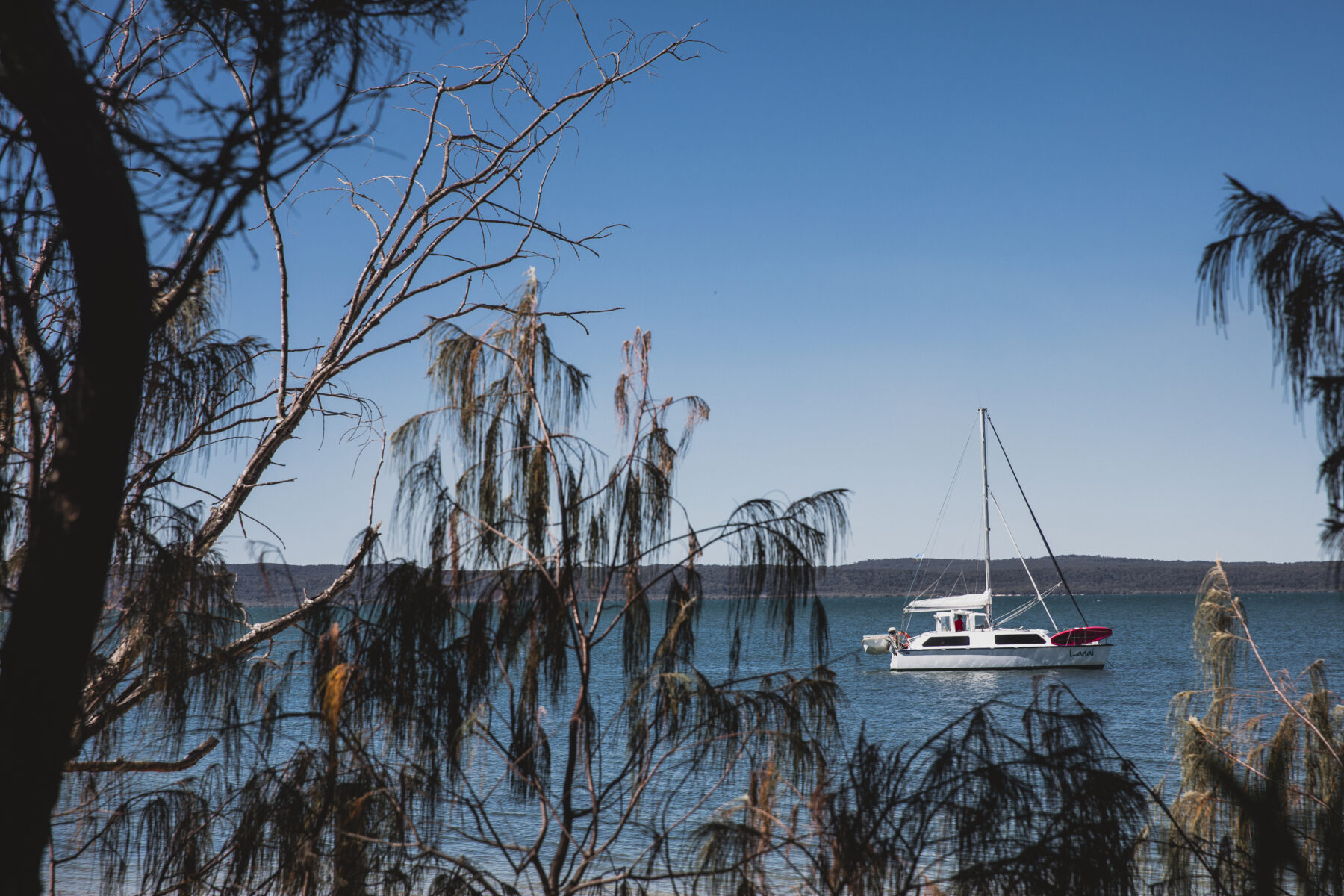
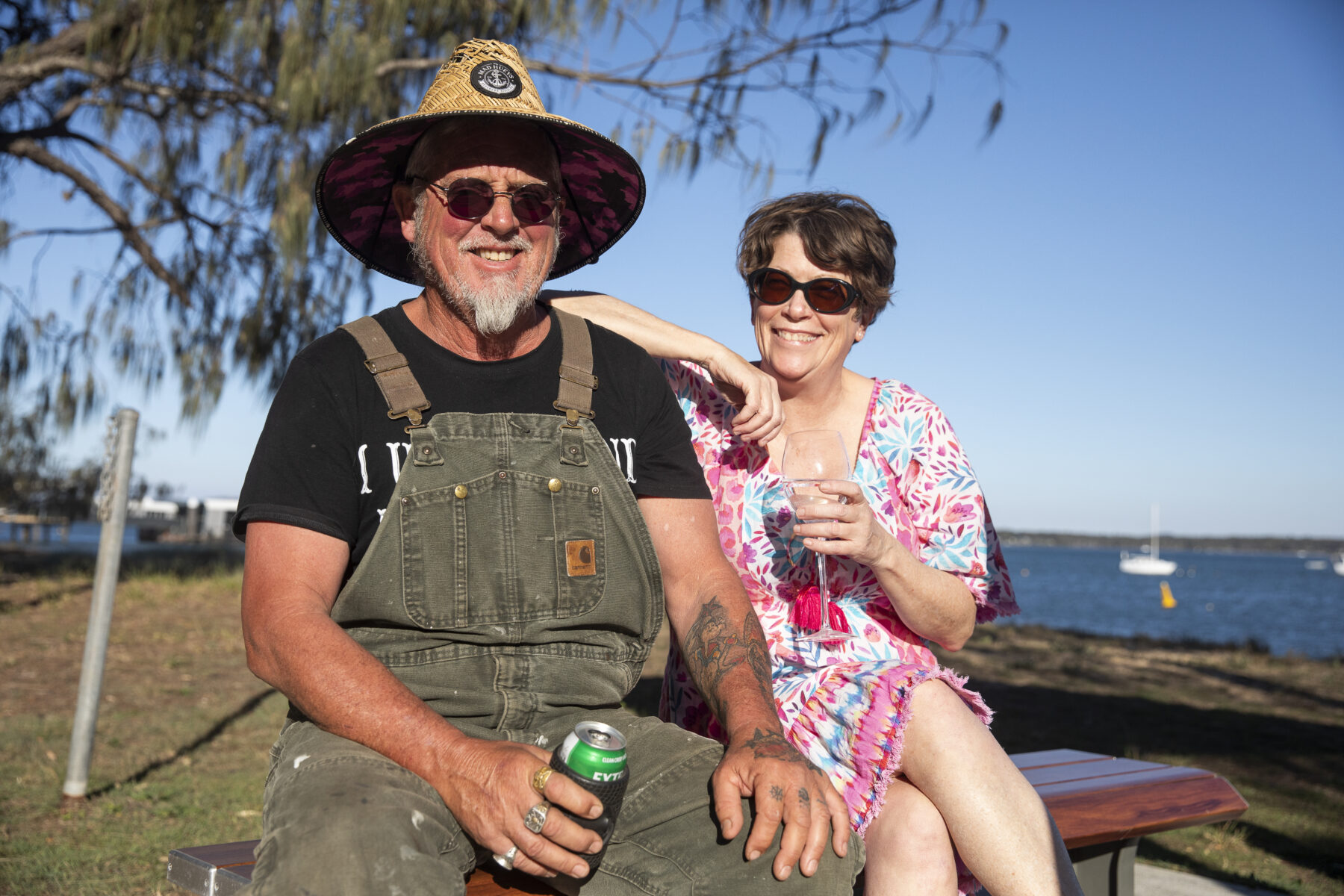
People are catching on. The island’s new-found popularity has already encroached on one of Rachel’s favourite activities. “[The island] is spectacular, but it’s been a sleeping secret for a while,” she says. “It’s definitely been discovered now. I used to be able to go to the beach every morning and swim nude if I wanted to. But now there are too many people!” Coochiemudlo has experienced a surge in house prices since the pandemic and the shift to home-based working, attracting unprecedented levels of interest. “Now people can work where they love, and not where they have to. We’re in the middle of a property boom; our properties on the island have gone up in value – which is nice. But the downside is, it used to be that anyone who wanted to live here pretty much could. But even now, lovely working families are having to move off the island,” Rachel says.
Since March 2020, house prices on Coochiemudlo Island have increased steadily. Thanks to the local newspaper and a podcast Rachel hosted in 2020, people from all over Australia have written to her to discuss the possibility of moving to the island, with one Victorian even asking her to inspect a property for them via a video call. She hopes that despite this popularity, the island will retain its mystique, of being a home for people from all walks of life, even the eagles on the radio tower.
“You can be yourself here. It’s not the Gold Coast; it’s not Noosa. People aren’t going around in sandals and white linen. It doesn’t have the glamour,” Rachel says. “There are ‘salt of the earth’ people, but also professionals. It’s a microcosm of Australian society. There are good people here.”
ISLAND LIFE
Less than 1 per cent of Australia’s population lives on the small islands dotted around our continent. This number is growing as more people head across the water after the onset of COVID, rejecting costly city living and office-based work. But is “island paradise” a myth, fuelled by a desperate search for escapism? Or have these far-flung residents truly found the key to happiness? This is the
second instalment in a series exploring the realities of island life.
Also in this series:






